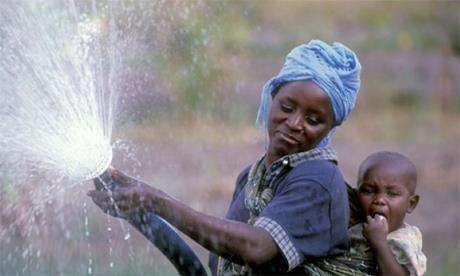What rural women can do
Rural women are active economic agents who could unleash major advancements in hunger and poverty eradication if they were able to participate equally with men in the agricultural economy.

A guest post by FAO Deputy Director-General for Knowledge Ann Tutwiler
When Alice Kachere, a small farmer from Malawi, lost her husband, she also lost her land, her home, and the means of providing for her three young children – all due to a lack of joint tenancy and land inheritance rights.
For Cesarie Kantarama from Rwanda, access to credit and markets is the missing link to improving incomes for her and other small producers. Women farmers working their small plots can’t compete with high-quality less-expensive imports, she says, and live a precarious existence while middlemen benefit from the fruits of their labor.
Indian farmer Sarala Gopalan says that women do most of the dirty agricultural work in her community, but only men, as the landholders, are considered farmers. For Sarala, tools that reduce women’s drudgery, help them work more efficiently and free up their time for more rewarding and remunerative activities will ensure that communities like hers do not waste half their human potential.
I met Alice, Cesarie and Sarala during the UN Commission on the Status of Women’s recent meeting in New York. For the first time in the Commission’s 56 years, rural women were front and center, gathering from around the world to discuss the real challenges they face and to share ideas for overcoming them.
Rural women play a critical role in the development and well-being of their communities, contributing to agriculture and rural enterprises that fuel local and global economies. Yet their economic potential is squandered due to the gender gap in access to productive resources and opportunities.
According to FAO’s most recent State of Food and Agriculture report, just giving women the same access as men to modern seeds, fertilizer and tools could increase production on women’s farms in developing countries by 20 to 30 percent – enough to feed up to 150 million more of the world’s hungry people.
Women make up, on average, 43 percent of the agricultural labour force in developing countries. But less than 20 percent of agricultural landholders worldwide are women due to legal and cultural constraints in land inheritance, ownership and use. Women represent less than 5 percent of all agricultural landholders in North Africa and West Asia, while across sub-Saharan Africa, they make up on average 15 percent.
FAO estimates that feeding a global population of just over 9 billion in 2050 will require a 60 percent increase in global food production. Three-fourths of that production will need to come from developing countries.
But producing more food is not enough, if poor people do not have the means to buy it. More than 90 percent of the hunger in the world is due, not to emergencies like drought or natural disaster, but to poverty.
In developing countries economic growth originating in the agricultural sector is at least twice as effective in reducing poverty as growth originating elsewhere. To solve the problems of poverty and hunger, the agriculture sector in these countries – particularly smallholder agriculture in which women are the driving force – must play a much more effective role.
For Alice Kachere, things are looking better. She now farms one hectare and has begun renting some land to expand her farm thanks to a tenfold increase in her maize yields due to better planting techniques, hybrid seeds, fertilizer and organic manure – farming practices she learned through membership in the National Smallholder Farmers’ Association of Malawi. She regrets that microcredit in her community is only for men and dreams about moving beyond crop production, about starting a business.
Several years ago while visiting a rural women’s project, I, like Sarala, remarked on the lost opportunity of a female labour force mired in drudgery. (Collectively, women from sub-Saharan Africa spend an astounding 40 billion hours a year simply collecting water!)
“What else would women do?” my (male) host said.
Rural women are active economic agents who could unleash major advancements in hunger and poverty eradication if they were able to participate equally with men in the agricultural economy. They aren’t a problem to be solved. They’re a solution.
Give women like Alice, Cesarie and Sarala access to land and credit, modern seeds and tools, information and a voice in decision-making, and just watch what they will do.
